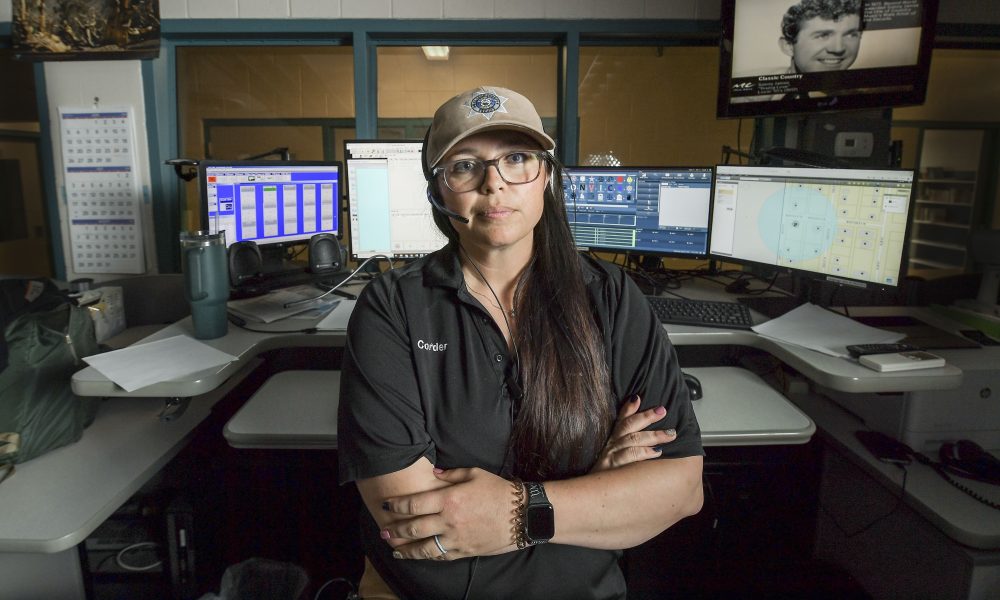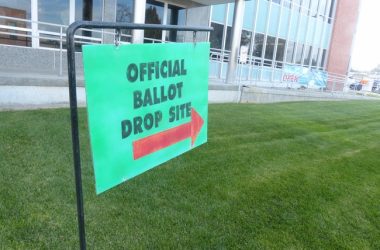Fentanyl overdose calls are becoming too routine for Malheur County 911 dispatchers.
“Place the heel of your hand on the center of the chest between the nipples. Then place your other hand on top of that,” said dispatcher Ashley Corder, her voice calm and steady as she speaks through the phone, rehearsing the steps of CPR.
“Straighten your arms and lock your elbows and position your shoulders directly over your hands and rapidly push down on the chest about two inches deep, as fast as you can — about two times per second. Continue this until the patient starts to breathe,” she directs.
Sometimes the individual does start to breathe.
More often, they need Naloxone, or its brand name Narcan, a drug that reverses opioid overdoses. Sometimes they don’t regain consciousness.
Corder has worked as a 911 dispatcher for the Malheur County Sheriff’s Office for two years. She said she can’t remember a time when she’s received more calls for overdoses.
“I have gotten more in the last month than I can count,” said Corder.
It is a very scary drug. It is very effective and very deadly.”
– Ashley Corder, Malheur County dispatcher
Corder said she is documenting overdoses in many ages, races, and genders. She often doesn’t know which drug a patient is overdosing on, but fentanyl has contributed to a rise in frequency and severity of such overdoses.
“It is a very scary drug,” Corder said. “It is very effective and very deadly.”
Before becoming a dispatcher, Corder worked as a volunteer EMT and host parent for exchange students. She currently works two day shifts a week at the dispatch center and manages a family ranch on off days.
“Dispatching is not an easy job,” said Corder. “You have to be able to shut down and leave this at work. It’s not something you can talk to your family about – it’s all confidential.”
Corder sometimes worries for her kids, growing up in an area where calls like these are becoming increasingly common.
The people on the other end of the 911 calls vary. Sometimes it is a worried store owner who is calling about a customer that came in overdosing. Other times it is a family member who is calling on behalf of a relative who has overdosed before. Corder said that in these cases, sometimes the person requests medical help and hangs up.
Some callers, especially younger ones, will have trouble calming themselves down.
“It’s really scary for them,” said Corder. “I don’t want to yell at them. I’ll ask, ‘Are you able to help them? Do you want to help your family member, your friend?’”
In any crisis situation, Corder also asks for callers’ names and calls them by it to maintain a personal connection.
But as a dispatcher, she rarely sees the patients through. On rare occasions, she’ll call the ambulance company later for updates in cases that were especially difficult or confusing. Most of the time, she doesn’t learn the outcome of those she helped. Once first responders arrive, the phone call is disconnected, leaving Corder in the 911 dispatch center in Vale to take another emergency call.
In time, she will again try to save a life by phone of someone reacting to fentanyl.
–Isaac Wasserman, The Enterprise
RELATED COVERAGE:
PART 1: SNEAKY KILLER: Fentanyl in Malheur County
EXCELLENCE IN JOURNALISM – Available for $7.50 a month. Subscribe to the digital service of the Enterprise and get the very best in local journalism. We report with care, attention to accuracy, and an unwavering devotion to fairness. Get the kind of news you’ve been looking for – day in and day out from the Enterprise.




